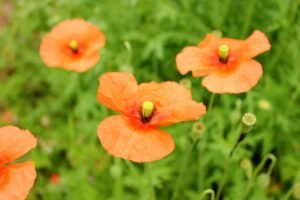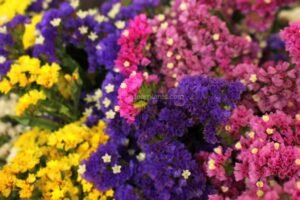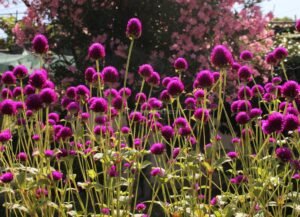Black-eyed Susan ‘Indian Summer’ (Rudbeckia hirta ‘Indian Summer’) is a plant in the annuals and biennials category that can grow 50cm – 1.5m tall and 10cm – 50cm wide. In this growing guide we’ll learn the cultivation details and how to plant Black-eyed Susan ‘Indian Summer’ (Rudbeckia hirta ‘Indian Summer’).
This plant is commonly known as black-eyed Susan ‘Indian Summer’.
This is a deciduous plant that takes 1-2 years to reach full maturity.
In this article
Plant profile
Common name: black-eyed Susan ‘Indian Summer’
Scientific name: Rudbeckia hirta ‘Indian Summer’
Plant type: Annual / Biennial
Habit: Columnar / Upright
Height: 50cm – 1.5m
Spread: 10cm – 50cm
Foliage: Deciduous
Sunlight: Full Sun, Partial shade
Soil: Clay, Loam
Moisture: Moist but well drained
Garden type: Informal Garden, Wildflower meadow
Planting type: Cut Flowers, Flower borders and bedding
Other characteristics: Plants for pollinators, RHS Award of Garden Merit
Seasonal colors
| Season | Stem | Foliage | Flower | Fruit |
|---|---|---|---|---|
| Spring | ||||
| Summer | ||||
| Autumn | ||||
| Winter |

How to plant Black-eyed Susan ‘Indian Summer’ (Rudbeckia hirta ‘Indian Summer’) – Photo by David J. Stang, CC BY-SA 4.0, via Wikimedia Commons
Annuals and biennials are ideal for formal or informal flower beds, but also for growing in pots and containers of all kinds. They are important plants for their rapid growth, instant color and relatively low cost.
They are also useful plants for filling spaces between newly planted trees and shrubs, as well as in perennial beds that may need to be revived after the first spring bloom.
They are an important ingredient in country house gardens and wildflower meadows.
[yarpp template=”yarpp-template-genus” require_tax='{“genus”: 1}’]
How to plant
In this section we will learn how to plant Black-eyed Susan ‘Indian Summer’ (Rudbeckia hirta ‘Indian Summer’), know its needs in terms of soil, watering and sun exposure.
Soil
Black-eyed Susan ‘Indian Summer’ (Rudbeckia hirta ‘Indian Summer’) is a plant that prefers to grow in clay or loam.
-
Clay soil is composed of more than 25 percent clay particles. These particles have a high moisture holding capacity and the soil is heavy to dig and can be waterlogged in winter (dry in summer).
-
The loam soil is dark, rich in organic matter but balanced in minerals. It offers the best of all worlds, retaining enough water for the plants, but allowing excess moisture to drain away. This is the most desired type of garden soil, perfect for most plants.
It is not very sensitive to soil acidity or alkalinity and grows well in soils with pH acid, alkaline or neutral.
Regarding drainage, Rudbeckia hirta ‘Indian Summer’ likes to grow in moist but well drained soil.
Sunlight
Black-eyed Susan ‘Indian Summer’ (Rudbeckia hirta ‘Indian Summer’) is a plant that should be grown in full sun or partial shade positions.

Cultivation profiles – Growing Black-eyed Susan ‘Indian Summer’ (Rudbeckia hirta ‘Indian Summer’) – Qwertzy2 at the English-language Wikipedia, CC BY-SA 3.0, via Wikimedia Commons



